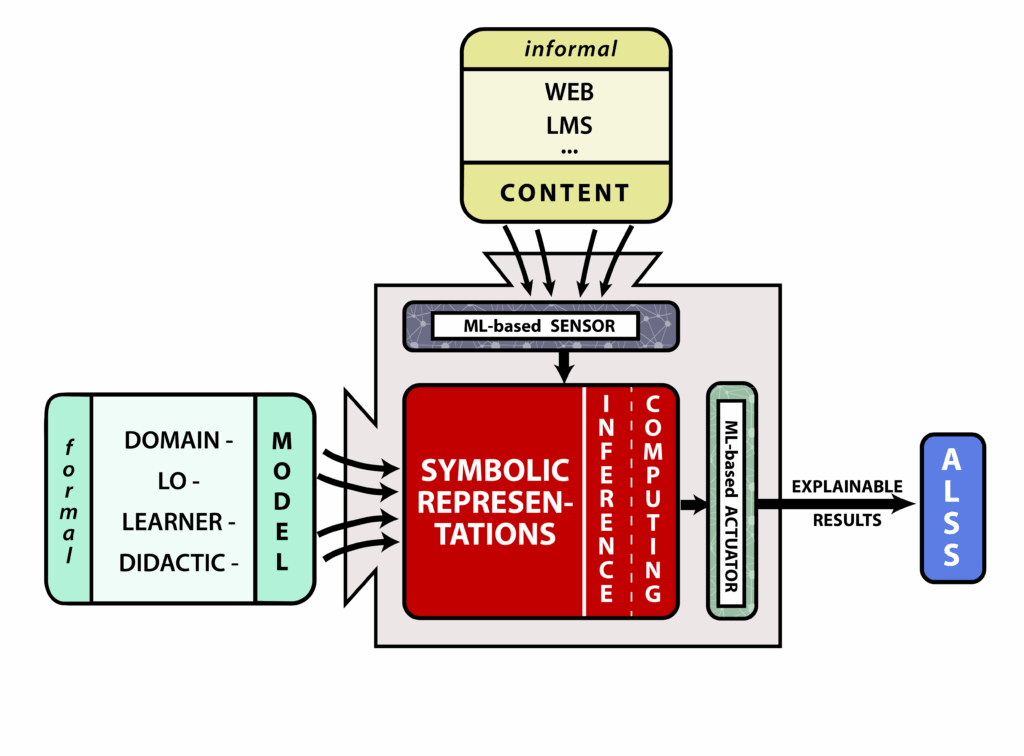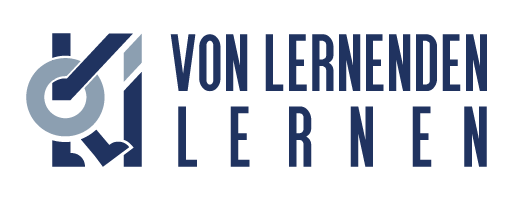SAIL
SAIL – Symbolic AI for Innovative (Teaching and) Learning
The Symbolic AI for Innovative (Teaching and) Learning (SAIL) network discusses the role of AI in computer supported education, and builds AI-based educational technology that have a symbolic core to ensure accountability, explainability and consistency with regulations like the AI Act of the European Union.
Planned activities include joint publications (e.g. policy statements, special issues), joint development of symbolic learning materials, adaptive learning assistant systems, and computational experimentation toolkits; see Sec 1.3 below.
There is a repository group at https://gl.kwarc.info/sail to support this.
1. What is the SAIL Network?
STEM Higher Education is a crucial facilitator for conserving democracy and wealth in Europe, one of the primary knowledge societies of the world. A challenge for mass education is to cater for an increasing diversity of learners, fueled by the widening of cohorts and their mobility. Computer assisted methods can be part of the solution to enable individualized learning paths. Yet there is still a large disconnect between the full potential and practice in this area, especially in the classroom.
1.1. Goals of the Network
The SAIL network aims to bring together researchers, engineers, education practitioners, and evaluators and build a community to leverage innovations in (Symbolic) Artificial Intelligence to a sector of critical societal impact.
1.2. Research Questions
The core research questions to be attacked in the SAIL network are:
- RQ1: Can the „symbolic core“ approach (see below) be implemented and scaled to become an effective and efficient means of supporting STEM higher education in Europe?
- RQ2: What should be the optimal combination between machine learning and symbolic AI in assisting STEM higher education in Europe at the day-to-day scale?
- RQ3: Can research on education be translated into domain-independent symbolic algorithms for individualized, adaptive learning support, based on fine-granular domain and learner competency models.
1.3 Activities in the SAIL Network
Besides discussion on the topic or development of materials and systems, the network should enable activities in various formats. We were thinking of grant proposals, summer schools, joint publications, policy statements. These activities will be spearheaded by ad-hoc subgroups of the SAIL network.
1.4 How to participate in the SAIL Network
For interested people and those who want to actively contribute to the network, two public mailing lists are installed.
- sail-announce@lists.informatik.uni-erlangen.de for just being informed about the activities in the network (subscribe: https://lists.informatik.uni-erlangen.de/mailman3/postorius/lists/sail-announce.lists.informatik.uni-erlangen.de/)
- sail@lists.informatik-uni-erlangen.de for contributing to the network (subscribe: https://lists.informatik.uni-erlangen.de/mailman3/postorius/lists/sail.lists.informatik.uni-erlangen.de/)
To become active in the SAIL network, just subscribe to the second one. The mailing list serves as a membership roster.
2. Background
2.1 Machine Learning and Symbolic AI — Complementary but Possibly Synergistic
Fueled by impressive technological advances and the promise of „automation without the effort“ machine learning methods — including large language models (LLMs) — have gained seeming dominance in AI in recent years.
Aarne Ranta classifies automation tasks into consumer tasks (wide-coverage, mission-uncritical, minimal investment) and producer tasks (low-coverage, mission-critical, high-investment). The former are what we hear about in the media and the latter are often intentionally kept confidential by the companies that use them because they are critical to their bottom line. Hence much of symbolic AI (ideal for producer tasks) is used in industry but virtually invisible to the public.
With its societal impact, higher education is certainly a producer task that critically needs control, explainability, and accountability as core goals/components, which ML and LLMs (currently) have considerable weaknesses at. –> EU AI Act (see below).
Symbolic methods also tend to be frugal, in terms of user data, required infrastructure, and environmental impact which favors mass deployment.
2.2. The „Symbolic Core Paradigm“ for AI Applications
Given the discussion above we propose the Symbolic Core Paradigm** for AI Applications. This paradigm insists that the core algorithms of an AI system manipulate symbolic representations (i.e. expressions in a formal language that has a standardized and an easily computable semantics) to compute, justify, and explain its results.

Subsymbolic AI (e.g. statistical or neural machine learning methods) are explicitly admissible in symbolic core systems, but are restricted to non-critical components, sensory, and actuatory components on the periphery of the AI systems. For instance, for extracting symbolic representations from informal documents, images, or raw data assisting human authors in curating domain models, or generating natural language for the interaction with learners.
2.3. Facilitating adoption in regular classes
Adaptive learning paths at the scale of a course are already possible in Learning Management Systems, and are used in Massive Open Online Courses. However this practice is seldom used in practice in regular courses. Potential causes:
- Designing and building these adaptive learning paths is currently a manual process that requires a massive investment from the instructors which is incompatible with
- Lack of integration with the instructor authoring environment or student learning environment
- Missing knowledge of educators about the underlying technology –> need for AI education on all levels
2.4. The need for open source
Nowadays, it’s really easy for a small team to obtain first impressive results. This has resulted in a galaxy of tiny stakeholders that don’t scale.
Open educational resources gain more and more importance, especially in higher education.
Proprietary software solution in AI assisted educational technology systems are widespread and tie up resources all over the world.
2.5. „Symbolic Core“ and Regulation (e.g. the EU AI Act)
The EU AI act is a European Union regulation that establishes a common regulatory and legal framework for AI within the European Union (EU); but like the GDPR it will probably have normative power over all providers that do business in the EU (which is everybody). It was enacted on August 1. 2024, and will be converted into national law in the three years after that.
The EU AI act classifies all educational AI systems as high-risk systems with corresponding regulations, in particular such systems have to meet high standards of human oversight, accountability, transparency, and explainability. Depending on the interpretation, systems only based on machine learning and subsymbolic AI technologies will not currently be able to fulfill these. So, the symbolic core paradigm is a possible solution to establish AI systems in education. How exactly this may be done and
2.6. Related actions
- Estonia’s AI-leap program: targets lower education; more about making students learn AI tools.
3. The core of the SAIL Network?
3.1 Theoretical/Methodological Framework
Machine Learning methods (deep learning, neural methods, LLMs) are the current hype in research and industry and are currently being employed as the main motor of automation for many tasks. They are currently tested for their advantages, disadvantages, and risks. Especially in an area of critical societal impact as higher education; this seems like a very risky operation; we are already seeing problems and detrimental developments.
In SAIL we propose a different framework: the central motor of automation should be symbolic representations of knowledge and the knowledge-based algorithms that act on them to guarantee control, explainability, accountability and data and resource frugality of the methods. Machine learning is useful at the boundaries as „sensors and actuators“, and assistants for extracting/proposing semantic annotations, these are crucial aspects of automation, but not the core of the automating higher education.
3.2 Non-Goals
SAIL is not (primarily) about
- learning management systems (although we will need them)
- micro-certification, and learning record grade/student management (although the symbolic core and domain models will certainly facilitate that).
- OER standards, (although open source/data/resources, their metadata and the sharing thereof will be a central aspect of SAIL).
3.2 Unique Selling Points (USP)
- Sharing-based Communities of Teaching/Learning Practice: agile adoption-oriented approach
- Focus on Infrastructure/Tooling/Practical Applications that are actually used
- Support High-Investment/High-Gain/High-Control methods in education
- Based on good Science/Engineering
- Not just „ask a LLM for results“

